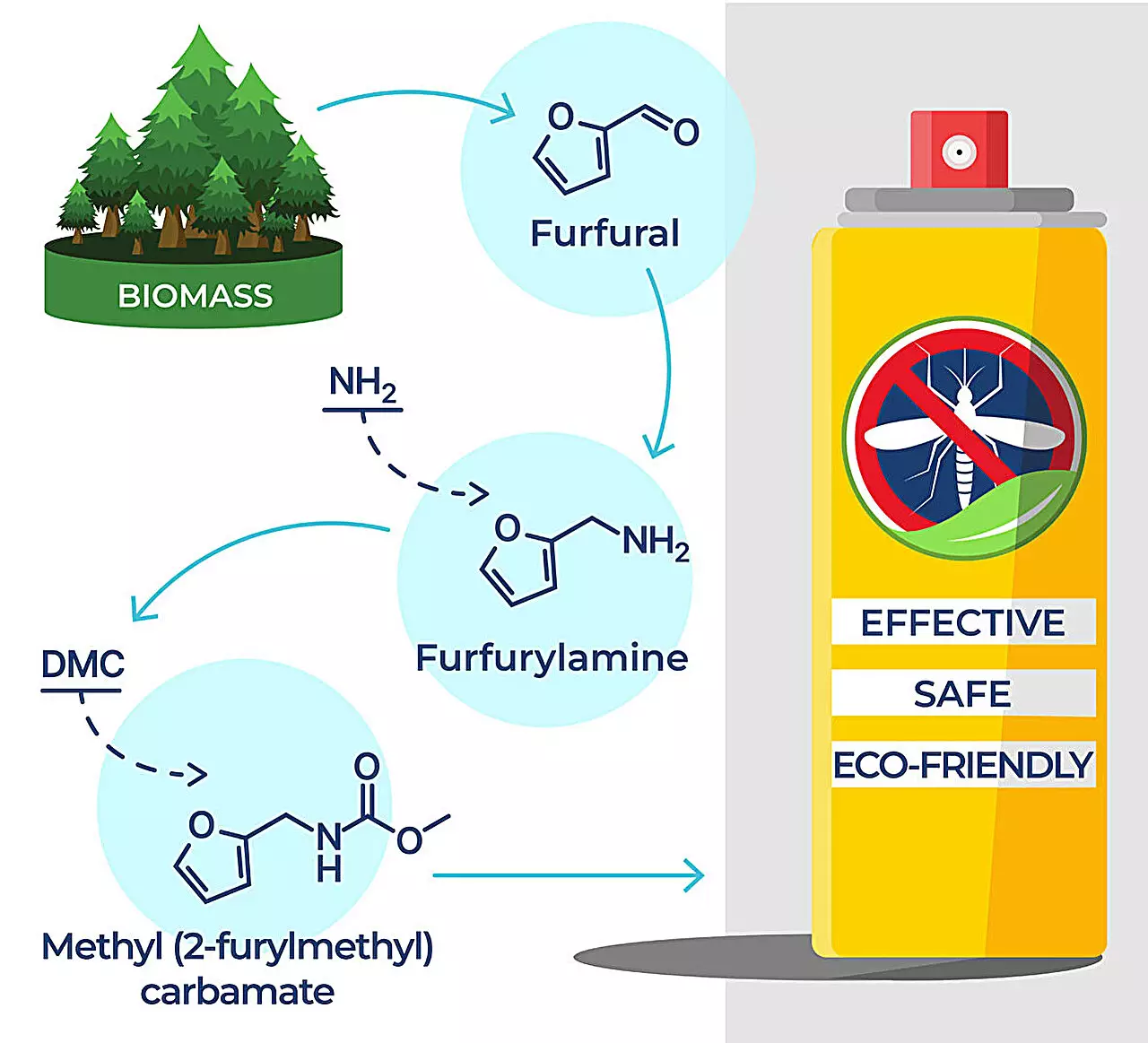As global populations soar, so does the demand for agricultural commodities. With an estimated 8.2 billion people to be fed by 2024, the agricultural sector faces an endless quest to bolster crop yields while simultaneously preserving environmental integrity. Crop protection methods, particularly insecticides, serve as essential components in maximizing agricultural output, preventing pest-related losses. However, traditional pesticides come with significant ecological costs, often harming non-target species and disrupting ecosystems. Fortunately, a groundbreaking study from the University of Delaware has introduced a beacon of hope, focusing on innovative, eco-friendly alternatives to traditional pesticides by harnessing biomass-derived materials.
Led by Professors Dion Vlachos and Michael Crossley, the team at the University of Delaware is pioneering a novel approach to pesticide formulation. Their research focuses on synthesizing target-specific insecticides from biomass materials like wood pulp, straw, and corncobs. These resources, often viewed as waste, present a sustainable alternative to fossil fuel-derived chemicals, aligning with the principles of circular economy. The findings, published in the journal *ChemSusChem*, demonstrate not only the potential insecticidal efficacy of these bio-based compounds but also their alignment with ecological safety.
The researchers pinpointed commercially available plant-based atoms to engineer specific functional molecules. Their work yielded bio-based “bridging molecules,” as described by lab manager Sunitha Sadula, which serve to connect conventional insecticides with greener alternatives. The objective, as stressed by Sadula, is to minimize or completely eliminate the presence of toxic chemicals in food production and its surrounding environments.
To assess the insecticidal activity of their newly developed molecules, the research team conducted experiments using vanillin and furfural, both commonly sourced from lignocellulosic biomass. Their testing phase included evaluating these compounds against the lesser mealworm beetle, revealing that their formulations achieved levels of mortality comparable to those of traditional pesticides. Crossley highlighted the remarkable flexibility of their chemistry, stating that modifying the molecular structure can lead to substantial shifts in the resultant chemical properties.
Despite these promising results, further testing is necessary to ensure that their formulations do not inadvertently affect beneficial organisms such as honeybees. This precaution underscores the need for comprehensive evaluations during pesticide development, stressing the importance of ecological integrity.
One of the standout achievements of this research is its emphasis on sustainability. Conventional pesticide production often relies heavily on fossil fuels, fostering a dependency that carries environmental risks. In contrast, the compounds developed at UD utilize fully renewable resources, presenting a sustainable pathway for future pesticide needs. With nearly 991 million tons of lignocellulosic biomass available annually in the United States alone, these methods promise both economic and ecological benefits.
Economically, the furfural-based compounds synthesized by the UD research team are reported to be two to four times cheaper than commonly used commercial pesticides, addressing key concerns about affordability and scalability in pesticide production. Their process eliminates the use of highly toxic reagents, further enhancing the sustainability of their operations, which is a crucial advancement in the context of global agricultural practices.
An interesting finding from this research was the compound’s favorable interaction with aquatic ecosystems. The UD-developed molecules show a tendency to remain in water rather than bioaccumulate in flora and fauna, thus reducing risks for consumers and the environment. This feature enables safer removal from fruits and vegetables through rinsing, marking a significant step towards consumer safety and public health.
The flexibility inherent in the developed methodology raises possibilities for creating additional eco-friendly chemicals and insecticides, possibly reshaping the landscape of agricultural chemical usage. As Crossley elucidated, this innovation, involving the transformation of waste into functional insecticides, opens an exciting avenue for exploration in producing a variety of environmentally safe chemicals.
The advancements achieved by the University of Delaware serve not just as a promising alternative to existing pesticide options but also as an essential step towards reconciling agriculture with ecological sustainability. As society grapples with the dichotomy of food production demands and environmental preservation, the emergence of bio-based pesticides encapsulates the potential for innovation within the agricultural sector. Through continued research and testing, these groundbreaking initiatives may well pave the way for a future where feeding the world does not come at the cost of its ecosystems.



Leave a Reply